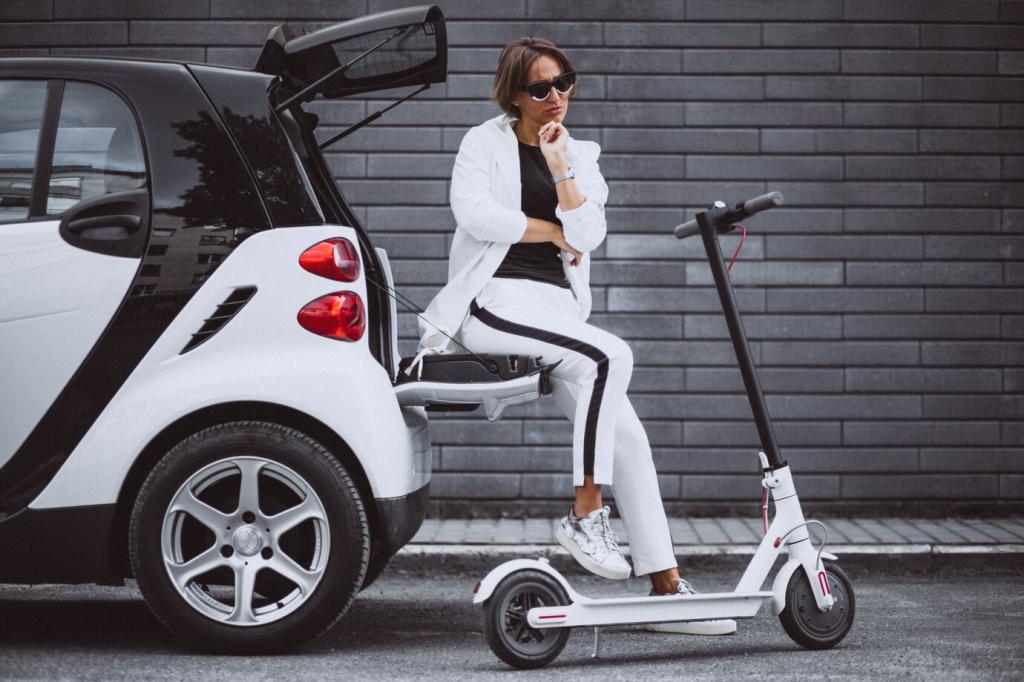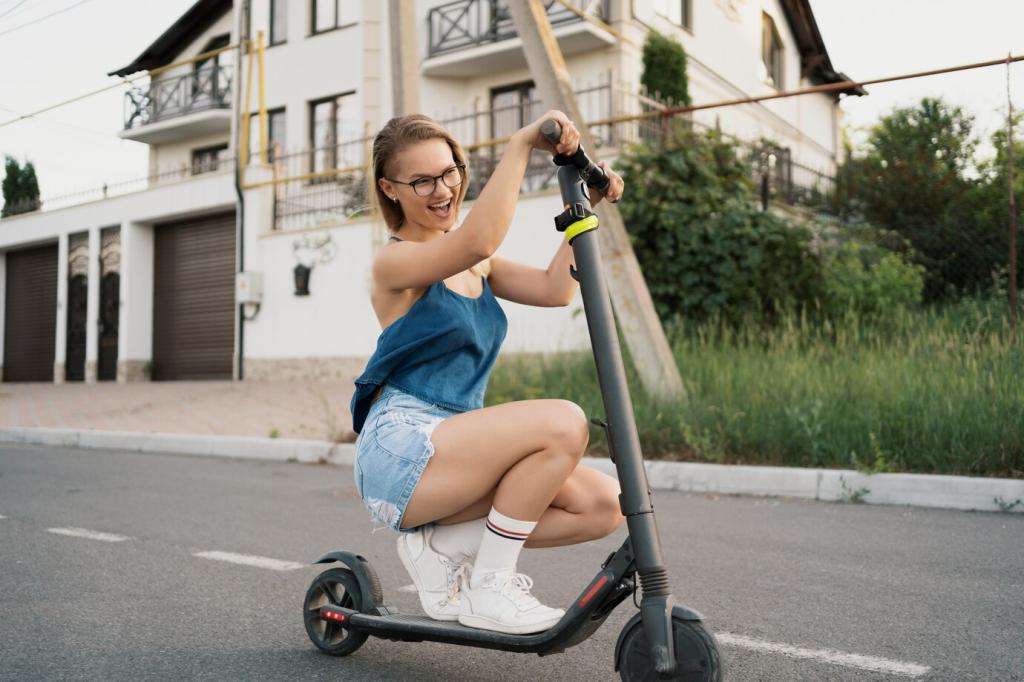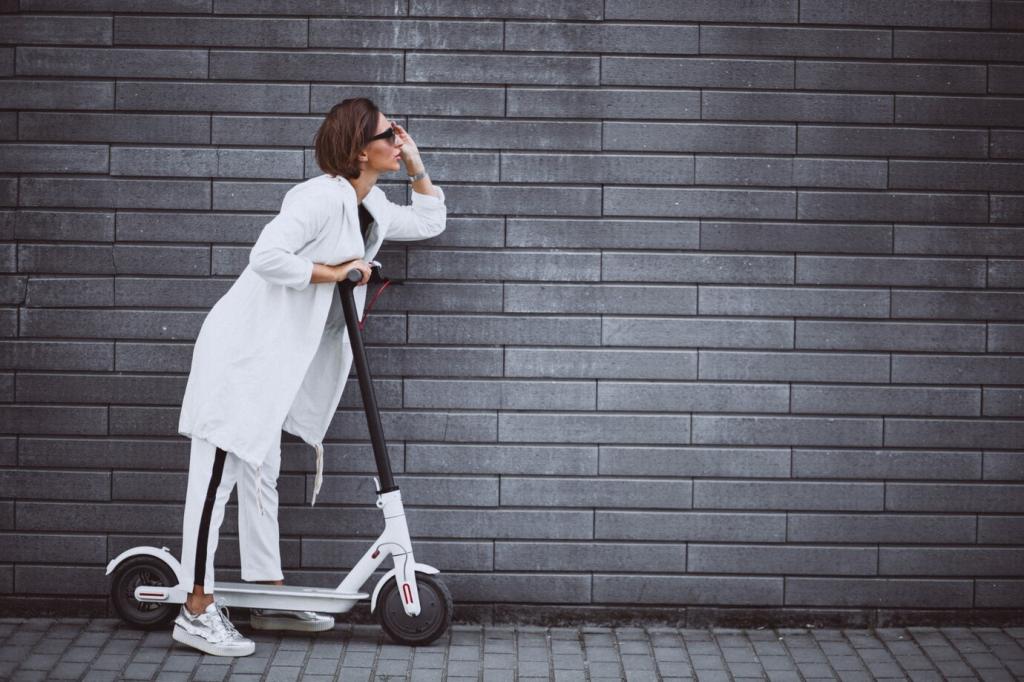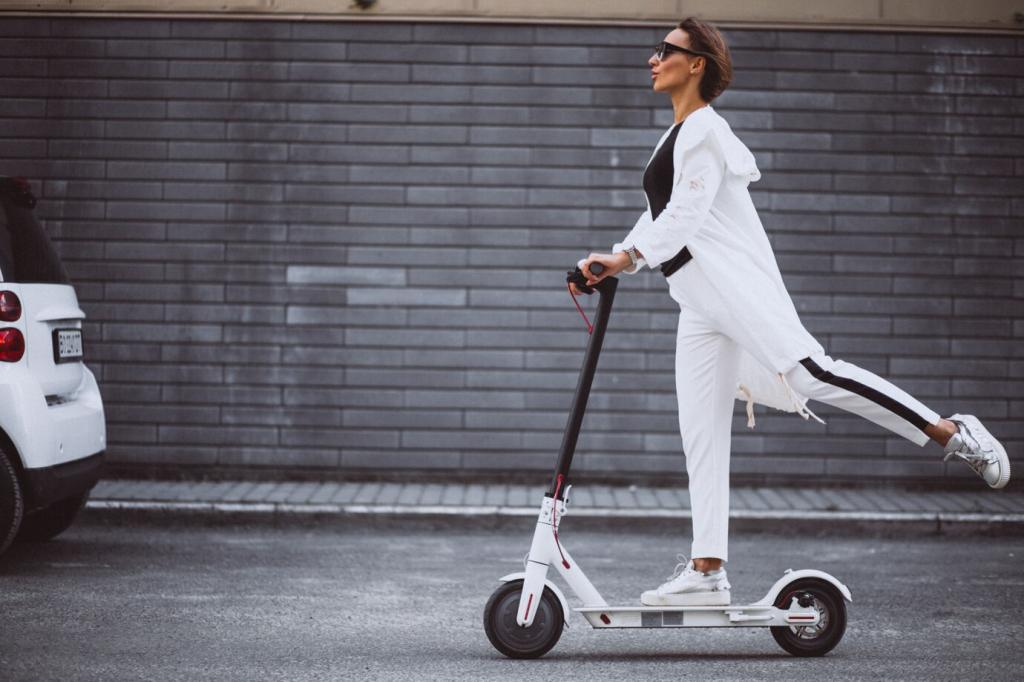Innovations in Scooter Safety Technology
Sensing the Street: How Smart Hardware Prevents Close Calls
01
Camera–Radar Fusion for Real-Time Awareness
By blending wide-angle cameras with compact radar, scooters track vehicles, pedestrians, and cyclists even in low light. The system flags lateral hazards at intersections and gently nudges riders with haptic alerts before a risky move becomes irreversible.
02
Ultrasonic Proximity and Side-Blind Mitigation
Discrete ultrasonic modules watch your flanks, detecting car doors cracking open or handlebars drifting toward mirrors. When distance narrows too quickly, the handlebar vibrates and a subtle light pulses, prompting small corrections that prevent big problems.
03
Edge AI That Learns Your Route
Onboard processors study your daily commute, noticing potholes, slippery paint, and chaotic driveways. Over time, the scooter anticipates tricky segments, warning earlier at familiar danger spots and suggesting calmer parallel streets you might appreciate.


Braking Breakthroughs: Control When It Matters Most
ABS for scooters balances speed, weight, and short wheelbase dynamics. It modulates pressure in microbursts, preventing front wheel lock while preserving steering authority, especially valuable on paint lines and metal grates after a sudden shower.
Braking Breakthroughs: Control When It Matters Most
Software blends regen with mechanical braking based on grip estimates and incline. The system maximizes energy recovery without jolts, smoothing deceleration so your stance stays stable, shoulders relaxed, and cargo secure in a front basket.
MIPS-Equipped Helmets with Crash Telemetry
Rotational-impact systems paired with accelerometers capture the severity and angle of a fall. If thresholds trip, your scooter can trigger auto-logging, mark the GPS position, and share optional alerts with trusted contacts you preselect in the app.
Smart Gloves and Haptic Guidance
Gloves vibrate on the left or right to cue turns, keeping your eyes forward. During sudden stops, a stronger pulse warns of closing rear traffic detected by the scooter’s sensors, guiding you to take a steadier, more centered stance.
Heart Rate and Fatigue Monitoring
Wearable data helps the scooter infer fatigue—long rides, elevated heart rate, choppy steering. It suggests a brief rest, highlights nearby parks or cafes, and adjusts acceleration mapping for gentler, more controlled starts while you recharge.
Connected Streets: V2X and Geofencing that Calm the Chaos
V2I messages warn when a green phase is about to end, discouraging risky sprints. In some pilots, scooters subtly limit speed approaching stale greens, reducing red-light entries and smoothing bunching at busy crossings during commute peaks.

Battery and Power Systems: Safety from the Cell Up
The latest battery management systems track each cell’s temperature, impedance, and drift. If an anomaly emerges, output is constrained gracefully, and the rider receives a clear prompt to service before a failure can escalate into a hazard.
Battery and Power Systems: Safety from the Cell Up
Heat is wicked away through engineered pads and vents, while enclosures use materials tested against puncture and flame spread. In the rare event of runaway, compartmentalization slows propagation and buys precious time to dismount safely.


Human Factors: Training, UX, and the Art of Gentle Nudges
Short prompts explain why a warning appeared, turning a momentary beeping icon into a memorable tip. Over a week, riders report fewer abrupt maneuvers, smoother turns, and a stronger sense of dialogue with their scooter.


Urban Design Synergy: When Cities and Scooters Collaborate
Scooters recognize mountable curbs and suggest the nearest ramp, reducing awkward lifts and sudden swerves. In shared areas, they encourage dismount in tight pedestrian zones, easing tensions while keeping travel times predictable and calm.
